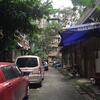Urban Transportation, Land Use, Air Quality, and Health
2024
Mar
06
. 2022. “Examining socio-spatial differentiation under housing reform and its implications for mobility in urban China.” Habitat International, 119, January, Pp. 102498.Abstract
. 2022. “Residential building materials: An important source of ambient formaldehyde in mainland China.” Environment International, 158, January, Pp. 106909. Publisher's VersionAbstract
. 2021. “Attitudes, Perceptions, and Walking Behavior in a Chinese City.” Journal of Transport & Health. Publisher's VersionAbstract
. 2021. “Seasonal variations of park visitor volume and park service area in Tokyo: A mixed-method approach combining big data and field observations.” Urban Forestry & Urban Greening, 58, March 2021, Pp. 126973. Publisher's VersionAbstract
哈佛大学中国项目研究简报: 城市形态对低碳主动交通的影响 – 以中国成都为例
. 2020. “Health benefits of on-road transportation pollution control programs in China.” Proceedings of the National Academy of Sciences, Sept 2020, 201921271. Publisher's VersionAbstract
. 2018. “Two-stage optimal scheduling of electric vehicle charging based on transactive control.” IEEE Transactions on Smart Grid, 10, 3, Pp. 2948-2958. Publisher's Version
. 2019. “Valuing mortality risk in China: Comparing stated-preference estimates from 2005 and 2016.” Journal of Risk & Uncertainty, 58, 2-3, Pp. 167–186. Publisher's VersionAbstract
. 2019. “Does neighborhood form influence low-carbon transportation in China?” Transportation Research Part D: Transport and Environment, 67, Pp. 406-420. Publisher's VersionAbstract
. 2019. “China’s CO2 peak before 2030 implied from diverse characteristics and growth of cities.” Nature Sustainability, 2, Pp. 748–754. Publisher's VersionAbstract
Wang et al. is the cover article of this issue of Nature Sustainability.
. 2019. “Built environment, income and travel behavior: Change in the city of Chengdu 2005-2016.” International Journal of Sustainable Transportation. Publisher's VersionAbstract





